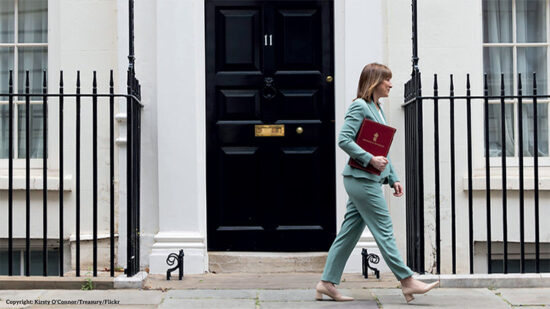Sterling
Sterling took a hit in early trading last week although the reason for the move was not really clear. Various excuses were put forward, but it may just have been a large market order in thin trading conditions (both the US and Canada were on holiday), but it soon found some support around $1.6000 against the US dollar and €1.2350 versus the euro and clawed back the losses through the week. Data releases helped the pound to stabilise, with the BRC Retail Sales Monitor posting is strongest outturn since December.
The colder weather gave clothing and footwear sales a boost, and total sales showed a 3.4% rise. The RICS House Price survey was also positive, showing that homeowners may at last see some respite from falling house prices.
Not all the news was good however, as U.K. manufacturing fell more than economists forecast in August as longer summer closures damped production of transport equipment. The wider industrial production measure came in at -0.5% as expected. Meanwhile, a marked increase in the oil deficit fuelled a sharp widening in the UK’s trade deficits in August. The August total trade deficit surged to £4.169 billion from £1.705 billion in July while the goods trade deficit widened to £9.844 billion from £7.337 billion in July, with both measures much wider than analysts’ median forecast.
There are a number of important releases this week including inflation and unemployment, as well as the release of the Monetary Policy Committee minutes from their last meeting. The majority of analysts expect a further round of Quantitative Easing at the November meeting so it will be interesting to see how the MPC members voted this time around and what was discussed. We look for further erosion against the single currency, but should continue to edge higher versus the US dollar.
Mixed fortunes ahead for the Pound this week, with likely gains versus the US dollar towards $1.6200, although GBP/EUR may well make further tests of support at €1.2350.
US dollar
The dollar drifted through last week with no real direction and little news to influence prices. With the US closed for Columbus Day last Monday, markets were thin but the dollar did manage to put in some gains, particularly against the pound. Reasons for the move were not clear, but sterling stabilised just under the $1.60 area before pushing back higher.
Against the euro, fears that the Europe’s debt crisis was deepening and a credit downgrade of Spain by Standard and Poor’s saw the dollar improve to the low $1.2800 area before the single currency recovered to finish near its best levels of the week.
The U.S. Trade deficit widened to $44.2bn in August as exports decreased to the lowest level since February and imports rose more than forecast. A bright spot was the weekly jobless claims report which showed the fewest applications for jobless benefit since February 2008.
There are some important economic releases due this week, but nothing that should impact the currency that much. Events in Europe will probably be more important but the markets seem comfortable with the euro for now, so we don’t expect any big rush back to the dollar, unless something unexpected occurs. Against sterling we feel the GBP/USD weakness was overdone last week, and should recover next week to head towards the $1.6300 area once more.
We expect the dollar to drift lower as investors reduce their safe haven trades, $1.6200 and possibly $1.6300 should be possible provided there are no unpleasant surprises on this side of the Atlantic.
Euro
The euro spent last week in fairly tight ranges, with investors having differing ideas as which direction the next major move will come. On the one hand the ECB’s pledge to give unlimited support for countries that sign up to economic reforms has given the euro some support, but the bears argue that it is now up to the politicians, and governments to ask for help, and there has been no follow-through from them.
The euro spent the early part of last week drifting lower, before support kicked in late on and it finished towards the top of its range. Data continues to be more negative than positive. German releases were encouraging, with the trade surplus better than expected and inflation benign, although industrial production came in at a worse than expected -0.5%, more than offsetting its July gains.
The Sentix Investor confidence index posted a slight improvement to -22.2 in October, but it was less than expected considering the ECB’s actions, and underwhelmed the markets. There were various Europe wide meetings through the week with ECB officials, finance ministers from member states, IMF personnel and just about everybody else attending, all with the sole aim of finding a solution to the euro’s problems.
This week sees a number of important releases including the ZEW surveys and Euro-wide trade balance as well as a possible 10 year Spanish bond auction on Thursday.
However a lot of investors will be keeping a close eye on the EU Summit of European leaders and ECB officials on Thursday and Friday. The ideas being put forward include closer co-operation with European governments with particular emphasis on a euro zone budget on top of the EU budget already in place. This new budget would be specific to the euro area, and while it would not come in for 2-3 years, it would mean greater unity within the bloc. That is all for the future, but for now the euro continues to hold its own. Despite Spain insisting it does no need a bailout, investors know that help is there should it be needed. We continue to feel that the backstop of the ECB is only a phone call away, and this should be enough to keep the euro from falling too far.
Look for Euro to make small gains across the board, testing support at €1.2350 versus the pound and back towards $1.3150 against the US dollar.
New Zealand Dollar
The kiwi dollar had a relatively steady week across the board as data proved mixed and there was little new news globally. New Zealand’s economic growth is poised to slow in the second half of the year as local businesses got gloomier in the third quarter in a deteriorating trading environment, according to the New Zealand Institute of Economic Research. The Wellington-based consultancy sees the pace of annual growth slowing to 1.5% in the second half of the year from a pace of 2.6% at the end of June, based on a more pessimistic outlook in the September quarterly survey of business opinion.
Labour conditions weakened in the quarter while inflationary pressures remained subdued and should stay within the central bank’s 1%-3% range. The House price index showed a lower than expected rise of 0.6% which reflected the sluggish housing market. The manufacturing index improved slightly but was still below the crucial 50 level for the 4th consecutive month, while the Food Price Index fell 0.9% in the September, reflecting lower prices for grocery food and seasonally lower prices for fruit and vegetables.
Little in the way of data this week, with the main release, the Consumer Price Index expected to come in well within the 1% – 3% (annualised) range. With no surprises out of Europe, we see a steady week, with the recent ranges persisting against both the US dollar and sterling.
Steady as she goes for now, with a range broadly from NZ$1.9400 to NZ$1.9750.
Australian Dollar
The Aussie managed to pull back some ground last week after falling nearly 8% in the last 2 months against sterling but less so against the US dollar. The move versus the pound was partly to do with negative sentiment on sterling, but also due to some relief as iron ore, Australia’s biggest export, hit a 2 month high. Demand for the Aussie was also attributed to investors who were buying the government’s latest note issue – an A$ 3.25bn 17 year bond that was the longest maturity on record.
Data-wise, the week didn’t start that well with job advertisements falling 2.8% in September, the 6th consecutive month of declines and now nearly 11% less than a year ago. Business confidence fell 3 points to stand at zero, while the business conditions index fell to -3. Companies were complaining of poor demand, tighter fiscal policies, soft commodity prices and importantly, a high local currency.
Consumer sentiment did pick up a little with a 1% rise, although it was the 8th straight month the index has been below the 100 level. Inflation expectations increased slightly in October, but remain comfortably within the Reserve Bank’s 2-3% target band. However should they increase above the top end, this could put the central bank in a dilemma. The unemployment rate rose sharply to the highest level in 2 years, although the number of people employed in the country rose by 14.5k, more than expected.
It should be a relatively quiet week ahead with little data to trade on. The Monetary Policy Meeting minutes will be released on Monday and there could be some insight as to whether the market can expect another cut at the November 6th meeting. The markets are certainly factoring it in, so the danger is that if there was no change the Aussie could firm quite sharply. However that’s in the future, and after the sharp weakness against sterling over the past 2 months, a period of consolidation is probably called for. Events in Europe will have an impact as usual, but overall we feel that the Aussie will trade steadily next week with a slight negative bias.
Look for a weaker Aussie in the run up to year end. A$1.6000 remains a near term target, but may not be achieved in the next week.
Canadian Dollar
The Canadian dollar (or loonie* as it is known for the image of the aquatic bird on the C$ 1 coin) improved sharply against sterling at the start of last week as the UK currency was hit by a wave of selling. Worries about more QE at next months’ Monetary Policy meeting, technical levels being hit, a failure to break the $1.6300 level against the US dollar were all put forward, but the outcome was the same.
The CAD actually lost ground against a number of other countries as concerns that slowing growth in China would hurt demand for oil and gold, two of Canada’s main export commodities. As the world s biggest consumer of metals and energy, China is important for Canadian exports as it derives about half of its export revenue from raw materials. On the data front, Housing starts were down slightly from August, but largely in line with the latest trend figures, while New Homes Prices rose 0.2% as expected.
Canada’s merchandise trade deficit narrowed more than economists forecast in August from the prior month’s record on the steepest decline in imports in more than three years. With big drops in the import of machinery and equipment, it underlined the lack of confidence in investment.
The Bank of Canada Business Outlook should provide some insight as to the health of the economy along with the manufacturing sales data later in the week. Inflation data on Friday should not cause any surprises, so overall look for a continued steady performance from the CAD.
Risk seems to be back in vogue again at the moment, so unless there is an easing of tension in Europe, we see the CAD pushing towards the C$0.9700 against the US dollar, and C$1.5600 versus Sterling. *You won’t be a loonie if you hold the CAD
Chinese Yuan
The yuan rather took the markets by surprise last week as it reached the strongest level versus the US dollar since 1993, touching a low of 6.2627 earlier today. The daily trade activity took the price to the extreme of the permitted trading band on several occasions last week as investors buy the yuan on the expectation that authorities will take more steps to counter the current economic slowdown.
Having been closed the week before last for a holiday, there was clearly pent up demand, potentially coming in response to the official announcement that the Communist Party’s 18th congress will start Nov. 8. The event, to feature a once-a-decade handover of power to a new generation of leaders, may result in increased stimulus to counter the current economic malaise. Better economic data from the US is also thought to have played a part, boosting the prospects of Chinese exporters.
The fact that the yuan has gained while the dollar is relatively strong has also surprised market watchers as the People’s Bank have tended to weaken the yuan relative to their trading partners to protect exporters, only allowing appreciation when those currencies are already on the back foot. So the strengthening of the reference rate, particularly yesterday and today was taken to be quite significant. Some analysts have suggested that the appreciating yuan may reflect China’s desire for U.S. President Barack Obama to win another four-year term in next month’s election. Romney is seen as having a tougher stance on China, and the PBOC may be trying to help Obama to make the argument in the next debate that he has succeeded to pressure Beijing into allowing the yuan to appreciate, although this is somewhat speculative.
We had expected yuan gains versus the dollar to remain limited in the build up to the Communist Party Congress, but instead new lows were set. This trend may continue into this week, but we do not expect this to be part of an ongoing increase in the rate of appreciation.
Japanese Yen
Last week was another fairly quiet week for the USD/JPY cross which has, since last Monday morning, largely traded in a 50 point range from 78.00 to 78.50. Investors are perhaps unsurprisingly rather nervous about comments coming from Japanese officials suggesting that more intervention in the currency markets could be imminent, should the yen strengthen much further. Even Japanese Prime Minister Noda has come out and said that his government will act against any disorderly gains for the yen, and urged policy makers around the world to follow through on pledges to rebalance global demand.
The yen’s strength is a “serious problem,” is out of step with Japan’s economic performance and “when necessary, we will take decisive action,” he said, speaking on the eve of the G7 summit in Tokyo this week. He went on to say “we have seen a certain amount of progress, but we must remain on our guard.”
Economic data showed that Japan’s current-account surplus widened from a year earlier for the first time in 18 months, as lower prices of imported energy helped to offset gains in the yen and a global slowdown that has capped exports.
The excess in the broadest measure of the nation’s trade was 454.7 billion yen ($5.8 billion) in August, compared with a 436.3 billion yen surplus a year earlier, the Finance Ministry said in Tokyo this week. The median estimate was for a surplus of 421.1 billion yen. The yen’s nearly 50% gain against the dollar in the last five years and territorial tensions with China are weakening Japan’s exports as the International Monetary Fund sees “alarmingly high” risks of a steeper global slowdown. A deteriorating trade position raises the risk of the nation eventually needing overseas funding to service the world’s largest public debt. The figures have been largely discounted as a blip in an otherwise downward trend.
Further gains from the yen versus the dollar seem unlikely given the overt warnings of intervention from the authorities last week. Nonetheless, there is still sufficient risk aversion to maintain the yen’s appeal. As such we expect more range bound trading in the coming days.
South African Rand
The rand continues to offer investors a rollercoaster ride as it reacts to developments in the ongoing strikes that are plaguing the mining and transportation industries. Reserve Bank Governor Gill Marcus spoke out last week warning that the nation’s economic outlook is worsening and job losses will mount as strikes spread. She fears that recent capital outflows are an “indicator of a loss of confidence” among foreign investors.
The rand slumped as much as 10% against the US dollar between the start of the Lonmin strike on the 10th August and its lowest point last Monday, although it has since rebounded by more than 4%. Investors decided that the recent move – weakening 6% from the 3rd to the 8th of this month alone – the rand’s biggest four-day sell-off in a year – was seen as overdone and as transport union members returned to work.
Technical indicators now suggest the rand is poised to extend its recovery if there is more short-term good news on the strikes. Foreign investors were net buyers of 1.1 billion rand ($127 million) of South African bonds yesterday, a second day of net purchases following 4.6 billion rand of outflows in the previous three trading days, according to JSE Ltd. data as some confidence returned to the markets.
Trading the rand last last week has been likened to catching a falling knife. The coming days look likely to bring a period of consolidation – most likely remaining below the R14.00 level, although the rand remains vulnerable to bad news. It is currently hard to see any real reasons to buy the currency however, so further weakness seems the more likely trend in the weeks to come.
For more currency data and information on how to assist your clients with their international money transfers, please visit the International Adviser Currency Zone powered by Moneycorp.








